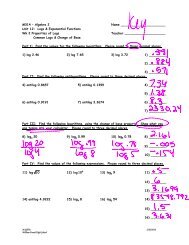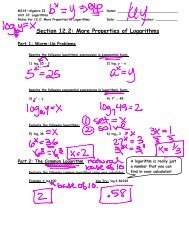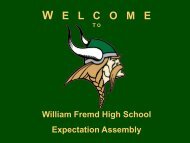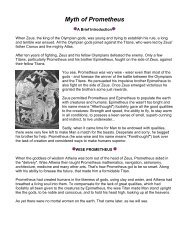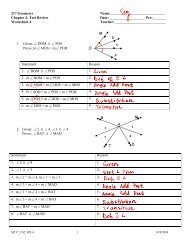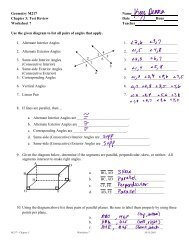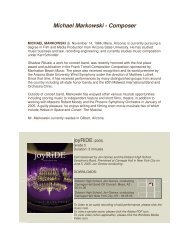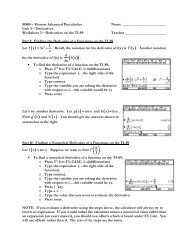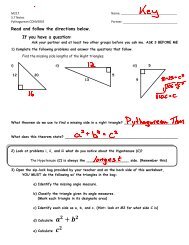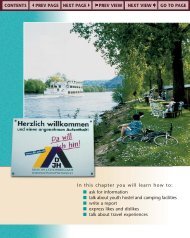Heros in the Civil Rights - William Fremd High School
Heros in the Civil Rights - William Fremd High School
Heros in the Civil Rights - William Fremd High School
Create successful ePaper yourself
Turn your PDF publications into a flip-book with our unique Google optimized e-Paper software.
Student Handout •<br />
• What did Marshall do for <strong>the</strong> NAACP?<br />
• What was <strong>the</strong> Brown v. Board 0/ Education case?<br />
• How many Supreme Court cases did Marshall w<strong>in</strong> and lose?<br />
• What did <strong>the</strong> president of <strong>the</strong> United States appo<strong>in</strong>t him to do <strong>in</strong> 1967?<br />
Throughout his life, Thurgood Marshall faced threats of death and violence from sou<strong>the</strong>rn<br />
whites who opposed his fight for racial equality. One such <strong>in</strong>cident occurred <strong>in</strong> 1946, several<br />
months after Marshall had won <strong>the</strong> acquittal of 24 out of 25 black defendants <strong>in</strong> a case<br />
<strong>in</strong>volv<strong>in</strong>g <strong>in</strong>terracial violence. One night <strong>in</strong> 1946, Marshall was driv<strong>in</strong>g to Nashville,<br />
Tennessee, with two o<strong>the</strong>r NAACP lawyers, Z. Alexander Looby and Maurice Weaver. As<br />
<strong>the</strong>y passed through Columbia, Tennessee, a group of eight white city police, state troopers,<br />
and sheriffs followed and stopped Marshall's car, tell<strong>in</strong>g <strong>the</strong> lawyers <strong>the</strong>y had a warrant to<br />
search <strong>the</strong> car for illegal alcohol. The officers conducted <strong>the</strong> search and found noth<strong>in</strong>g. They<br />
let <strong>the</strong> three men go, but stopped <strong>the</strong>m aga<strong>in</strong> one mile down <strong>the</strong> road. This time, <strong>the</strong> police<br />
grabbed Marshall, accused him of driv<strong>in</strong>g <strong>in</strong>toxicated, and told <strong>the</strong> o<strong>the</strong>r two lawyers to<br />
leave. The police drove Marshall toward <strong>the</strong> Duck River, where members of <strong>the</strong> Ku Klux<br />
Klan were wait<strong>in</strong>g with a noose to lynch him. However, Looby and Weaver ga<strong>the</strong>red<br />
a group of armed black residents and followed <strong>the</strong> police car. The police were thus forced<br />
to drive <strong>in</strong>stead to <strong>the</strong> local magistrate's office <strong>in</strong> town, where Marshall blew his breath<br />
forcefully <strong>in</strong>to <strong>the</strong> official's face to prove his sobriety.<br />
Despite several more threats to his life, Marshall's success <strong>in</strong> w<strong>in</strong>n<strong>in</strong>g civil rights cases<br />
cont<strong>in</strong>ued to grow. From 1967 to 1991, he served faithfully on <strong>the</strong> Supreme Court. Dur<strong>in</strong>g<br />
his tenure, he presided over hundreds of court cases, and sought to make <strong>the</strong> Constitution a<br />
truly "liv<strong>in</strong>g document" to support justice for all races.<br />
• What happened to Marshall as he was driv<strong>in</strong>g to Nashville?<br />
• What prevented him from be<strong>in</strong>g lynched?<br />
• What did Marshall do between 1967 and 1991?<br />
© Teachers' Curriculum Institute USH-12-5, Activity 2.3, Page 20



